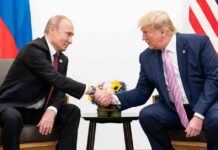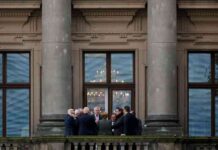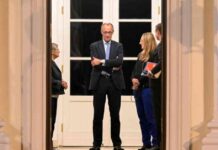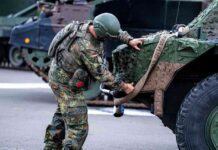Antifascism: A Unifying Force in German Leftist Movements
Antifascism serves as a unifying principle among various factions of the German left, encompassing a range of ideologies and beliefs. It has been a fundamental conviction for traditional leftist groups such as the Social Democrats, labor unions, and party communists, as well as for the New Left that emerged in the 1960s and subsequent new social movements. Antifascism has mobilized and politicized generations of young leftists over the years. In the fight against neo-Nazis, leftist circles, including liberal and social democratic factions, are more inclined to accept radical militant actions, even those that involve attacks on individuals.
The rebellious spirit inherent in autonomous antifascism has permeated popular culture, as evidenced by Danger Dan’s hit song about „artistic freedom.“ However, the rise of the AfD poses the greatest challenge to leftists of various stripes since the end of the GDR. With the upcoming state elections in Saxony, Thuringia, and Brandenburg, there is a real threat of a far-right party becoming the dominant force in German state parliaments for the first time since 1945. This looming reality has sparked intense debates within various leftist organizations, projects, and networks on how to prevent this outcome.
In the face of this challenge, many unorganized grassroots leftists are turning to the Left Party in search of a platform where they can have a meaningful political impact. While the newly formed alliance led by Sahra Wagenknecht has garnered attention in the public and media spheres, hopes that it could siphon off AfD voters have proven unrealistic. The European elections saw the alliance primarily attracting former SPD and Left Party voters rather than diminishing the AfD’s success.
Despite only a small fraction of the party’s officials and representatives defecting to the new alliance, current polls suggest that a significant portion of the Left Party’s traditional voter base in the eastern states may follow suit. It appears that both academia and the media, as well as the party itself, underestimated the extent of nationalist and statist leanings within this voting bloc. Many younger party members who were politicized after the merger of the PDS and WASG into the Left Party in 2004 seem to have been unaware of the substantial ideological and cultural differences between them and their voters.
The upcoming election dates in Saxony, Thuringia, and Brandenburg, where the Left Party faces another potential loss of political relevance after losing its parliamentary status in the Bundestag last year, likely prompted Janine Wissler and Martin Schirdewan to resign as co-chairs in mid-August. Despite this setback, the departing leaders emphasized that the party still has a future, pointing to 8,000 new members who joined since the split with the new alliance.
In urban centers across Eastern Germany, a notable number of previously non-politically active individuals are joining the Left Party. Many are motivated by the desire to counter the AfD’s electoral success. A significant portion of these new members are participating in door-to-door campaigning, with candidates like Leipzig’s Nam Duy Nguyen pledging to visit tens of thousands of voters to engage in dialogue. The aim is to re-engage former Left Party voters and attract new supporters.
Drawing inspiration from the concept of New Class Politics, which advocates for a reorientation of the left towards representing the interests of workers and the poor, these efforts aim to address dissatisfaction over low wages and high rents in hopes of limiting the AfD’s appeal. In parallel, political groups and organizations from the extraparliamentary left are employing their usual tactics and campaigns to counter the AfD’s rise.
One of the prominent initiatives is the campaign for an AfD ban, led by a coalition of organizations like the Republican Lawyers‘ Association, the Paritätischer Wohlfahrtsverband, and the Association of Persecutees of the Nazi Regime – Bund der Antifaschistinnen und Antifaschisten. This campaign aligns with discussions in civil society and leftist circles, suggesting that merely debating an AfD ban could delegitimize the party. However, the legal defeat suffered by the Federal Interior Minister in attempting to ban the magazine Compact raises questions about the effectiveness of such measures.
Similarly, campaigns like „Björn Höcke is a Nazi“ by the alliance Stand Up Against Racism and „Vote yes. #AfDno.“ by the Association for Democratic Education and Culture – Demokult aim to delegitimize the AfD. The „We remain stable“ campaign urges community politicians and venue operators to uphold a „firewall“ against the AfD and refrain from collaborating with or allowing right-wing extremists. Additionally, there are various regional campaigns urging local individuals and organizations to publicly oppose the AfD.
In cities with vibrant leftist scenes like Berlin and Leipzig, groups are supporting leftist organizations in rural Eastern Germany, providing material aid and participating in their events to encourage continued activism under challenging circumstances. Concerts and rallies are planned around the election days, with projects like „Kein Bock auf Nazis“ organizing a major concert in Potsdam featuring bands like ZSK, Madsen, and Sportfreunde Stiller.
While some groups advocate for militant antifascism on the streets, adopting tactics like those seen at the recent blockade of Björn Höcke’s event in Jena, others believe that such actions have had limited impact on the AfD and its supporters in recent years. The array of responses to the AfD’s electoral threat reflects a continuation of familiar strategies within leftist circles, without delving into a critical examination of the failures of left-wing politics.
There is a noticeable absence of discussions on the broader crisis of bourgeois-democratic society, not just in Germany but globally, exemplified by the rise of authoritarian right-wing parties. The inability of parliamentary and extraparliamentary leftists to initiate transformative projects or mobilize effective social movements has left a void that is being filled by right-wing forces articulating fundamental challenges to bourgeois rule.
In conclusion, the struggle against the AfD has become a focal point for the left, yet the current responses largely echo past tactics without addressing the underlying failures of leftist politics. Amidst the looming threat of the AfD’s electoral success, there is a pressing need for the left to engage in deeper reflection and strategic reevaluation to effectively counter the rise of right-wing extremism.















